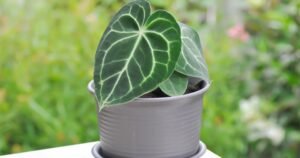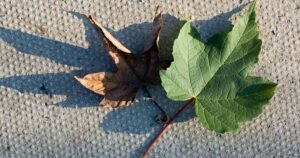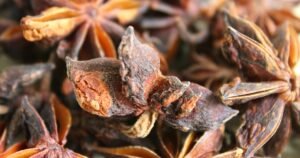Gravel is essential for plants in a home garden or a large-scale commercial farm.
Skip the gravel inside the bottom of individual or pot liners.
It provides several benefits to plant growth and overall health.
This guide will discuss the importance of gravel for plants and how you can use it effectively.
Gardening is a delightful hobby, and there are ways to improve it.
One of these ways is by using gravel in your garden.
Gravel isn’t just for paths and driveways; it can also be a helpful friend to your plants.
In this essay, we’ll explore how gravel can be a real boost for your garden and how you can make the most of it.
What is Gravel?
Gravel is a type of coarse rock that is commonly used in landscaping and gardening.
It comprises small stones or pebbles ranging from 2mm to 75mm.
Gravel can be found naturally in rivers, lakes, and oceans or produced by crushing larger rocks.

Why Gravel is necessary for Plants?
- Improved Drainage: Gravel helps soil drainage by creating air pockets between the particles. This allows excess water to drain away from the plant roots, preventing root rot and other diseases caused by waterlogging.
- Better Aeration: Similar to drainage, gravel also helps improve soil aeration. The air spaces created by the gravel particles allow oxygen to reach the roots, which is necessary for healthy plant growth.
- Prevents Soil Compaction: Compacted soil can be a significant problem for plant roots as it restricts their ability to absorb nutrients and water. Gravel helps in preventing soil compaction by keeping the soil loose and airy.
- Provides Stability: Another vital benefit of gravel is its stability to plants, especially in windy areas or heavy rainfall. The weight of the gravel helps keep the plants firmly in place, preventing them from getting uprooted.
- Suppresses Weeds: Gravel also acts as a natural weed suppressant by blocking sunlight and preventing weed seeds from germinating. This reduces the competition for nutrients and water, allowing plants to thrive.
Benefits of Using Gravel for Plants
- Low Maintenance: Gravel is a low-maintenance option for plants as it does not require regular watering, fertilizing, or trimming.
- Cost-effective: Gravel is relatively inexpensive and can be easily found in most areas compared to other landscaping materials.
- Versatile: Gravel comes in various sizes and colors, making it a versatile choice for any garden or landscape design.
- Durable: Gravel is a durable material that can withstand harsh weather conditions and does not break down quickly, making it a long-lasting option for plants.
- Environmentally Friendly: As gravel is a natural material, it is environmentally friendly and does not contain harmful chemicals that may harm plants or the soil.

How to Use Gravel Effectively for Plants?
- Mulching: Use gravel as a mulch layer around plants to retain moisture, suppress weeds, and improve drainage and aeration.
- Bottom Layer in Pots: Place a layer of gravel at the bottom of pots or containers to prevent waterlogging and improve drainage.
- Pathways: Create pathways in your garden using gravel to provide stability and reduce soil compaction.
- Garden Beds: Use gravel as a base layer for garden beds to improve drainage and prevent weed growth.
- Mixing with Soil: Mix gravel with the soil before planting to improve its structure, especially in clay or compacted soils.

Best Types of Gravel to Use for Plants
- Pea Gravel: This type of gravel is small and smooth, making it ideal for mulching around plants or as a base layer in pots.
- River Rock: These rounded stones come in various sizes and colors, making them a popular choice for landscaping.
- Crushed Stone: Ideal for improving drainage and preventing soil compaction, crushed stone comes in different sizes and shapes.
- Decomposed Granite: This finely crushed gravel is a great pathway or base layer for garden beds.
- Lava Rock: With its porous surface, lava rock helps improve soil drainage and aeration while adding texture to your landscape design.

How to Properly Install Gravel For Planting
- Prepare the Area: Before installing gravel, remove any existing plants, weeds, or debris from the area. Level the ground and remove any large rocks or objects.
- Lay Landscape Fabric: To prevent weed growth, lay a layer of landscape fabric over the prepared ground.
- Add Gravel: Spread a layer of gravel evenly over the landscape fabric to your desired thickness.
- Rake and Compact: Use a rake to evenly distribute the gravel and then use a tamper or compactor to compact the gravel layer. This will provide stability and prevent shifting over time.
- Repeat: If you are using multiple layers of gravel, repeat steps 3 and 4 until you have achieved the desired thickness.
- Finish with Edging: To prevent gravel from spreading, use landscape edging to create a border around the area.
- Add Plants: Once the gravel has been properly installed, you can add your plants or seeds into the desired areas.
Considerations When Choosing Gravel for Your Garden
- Plant Needs: Consider the needs of your plants, such as soil acidity and water requirements, when choosing the type of gravel to use.
- Climate: The climate in your area can also affect which type of gravel is best for your garden. For example, lighter-colored gravel may be more suitable in hot and dry climates as it reflects heat and helps moisten the soil.
- Maintenance: Some types of gravel may require more maintenance, such as raking or replenishing, so consider how much time and effort you are willing to put into maintaining your garden before choosing a type of gravel.
- Aesthetics: Gravel comes in various sizes and colors, so consider the overall look and feel you want for your garden when choosing the type of gravel.
- Accessibility: If you plan on using heavy equipment in your garden, it is crucial to consider the accessibility of different types of gravel, as some may be more difficult to move or transport than others.

Maintenance Tips For Long-Lasting Results with Gravel
- Regular Weeding: While gravel helps suppress weeds, it is still important to regularly weed your garden to prevent them from taking root.
- Replenish as Needed: Over time, gravel may sink into the ground or get displaced due to weather or foot traffic. Periodically check and replenish the gravel layer as needed.
- Rake and Level: Use a rake to level out any uneven spots and maintain a consistent layer of gravel.
- Watch for Soil Compaction: If your soil is compacted, consider adding more gravel or mixing it with the soil to improve drainage and aeration.
- Check Drainage: Periodically check the drainage in your garden beds or pots to ensure that excess water is appropriately draining, as too much gravel can hinder drainage.
How to Use Gravel for Plants
- Mix it with Soil:
To improve drainage, mix some gravel into your garden soil. A good rule is about 20-30% gravel to soil. Mix it well so it’s even.
- Use it as Mulch:
Spread gravel on the soil’s surface around your plants. This helps keep weeds away, saves water, and keeps the temperature steady.
- Make Pathways:
Design paths with gravel to make it easy to reach your plants. It also makes your garden look pretty.
- For Potted Plants:
In pots, put a layer of gravel at the bottom before adding soil. This helps the water drain better.
Conclusion
Gravel is essential for plant growth, providing numerous benefits such as improved drainage, aeration, and stability. It is also a cost-effective and environmentally friendly option for landscaping. Using gravel effectively in your garden or landscape design can ensure healthy and thriving plants. Experiment with different types of gravel to find the best fit for your plants’ needs.
Gravel is like a secret helper in your garden. It’s versatile and doesn’t cost much, but does many good things. It improves drainage, fights weeds, stabilizes temperatures, prevents soil erosion, and makes your garden look lovely. Using gravel wisely can create a happier and more beautiful garden for you and your plants. So, the next time you’re working on your garden, remember the wonders of using gravel to keep your plants healthy and charming.
FAQs
What is Gravel, and Why Do People Use It for Plants?
Gravels are small rocks or stones that people use in gardening.
It’s used for plants to ensure the soil doesn’t hold too much water, prevent soil from washing away, and make the garden look nice.
Is Any Gravel Okay for Plants?
Not all gravel is good for plants.
It’s best to use unique gardening gravel or pea gravel.
They are clean and safe for plants, and their smooth edges won’t hurt plant roots.
How Does Gravel Help Plants When It Comes to Water?
Gravel makes spaces between soil bits so extra water can drain away.
This stops the soil from getting too wet, which is terrible for many plants.
Can I Use Gravel Alone for My Plants?
No, most plants can’t grow well in just gravel.
Gravel doesn’t have the food plants need.
It would help if you mixed gravel with unique plant soil.
Do All Plants Like Having Gravel Around Them?
Not all plants need gravel. Some, like cacti and succulents, like gravel because they don’t want too much water.
But other plants like more water and different soil.
How Much Gravel Should I Put Around My Plants?
It depends on the plant and the kind of soil you have.
A layer of gravel about 1 to 2 inches deep on top of the soil is suitable for most plants.











